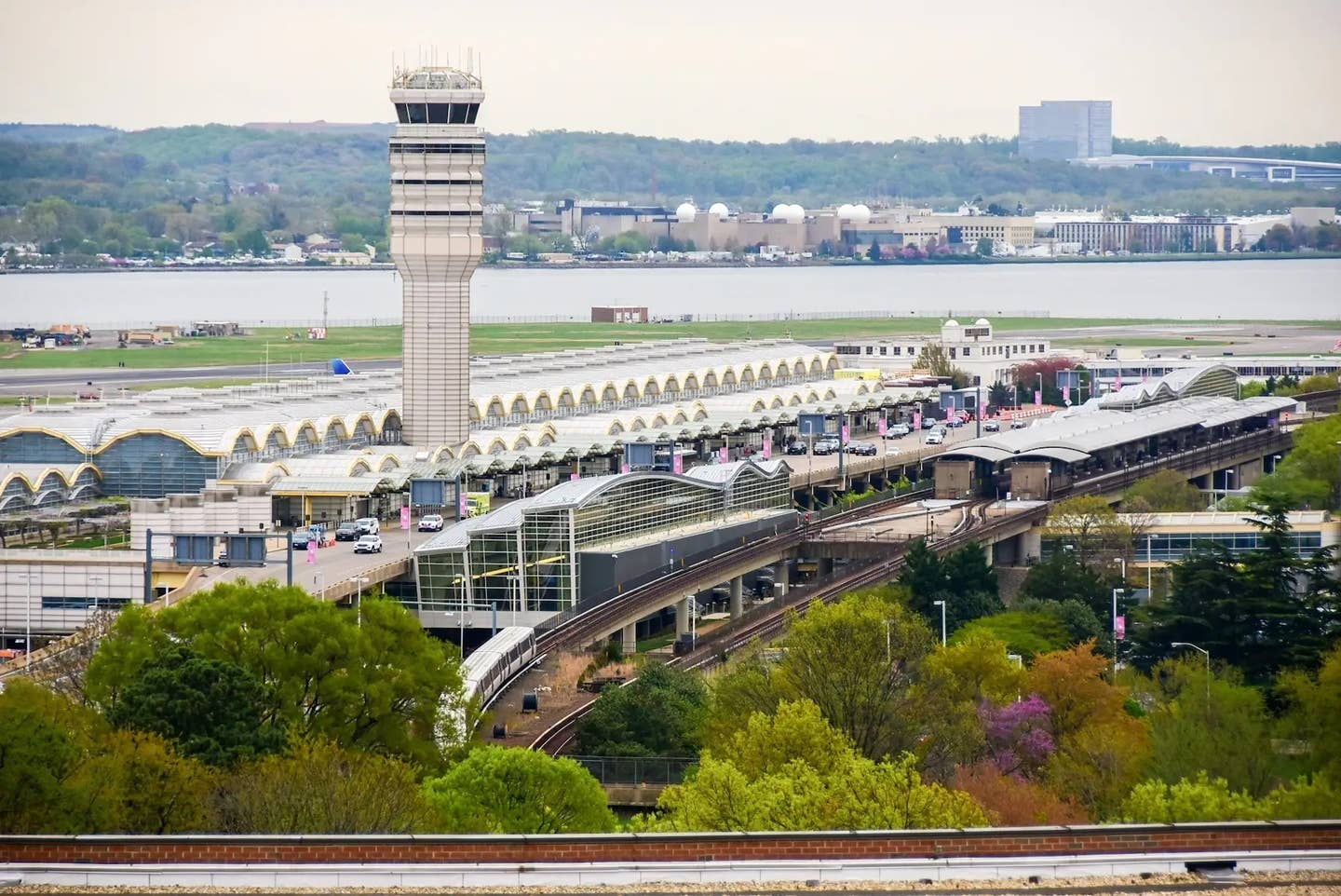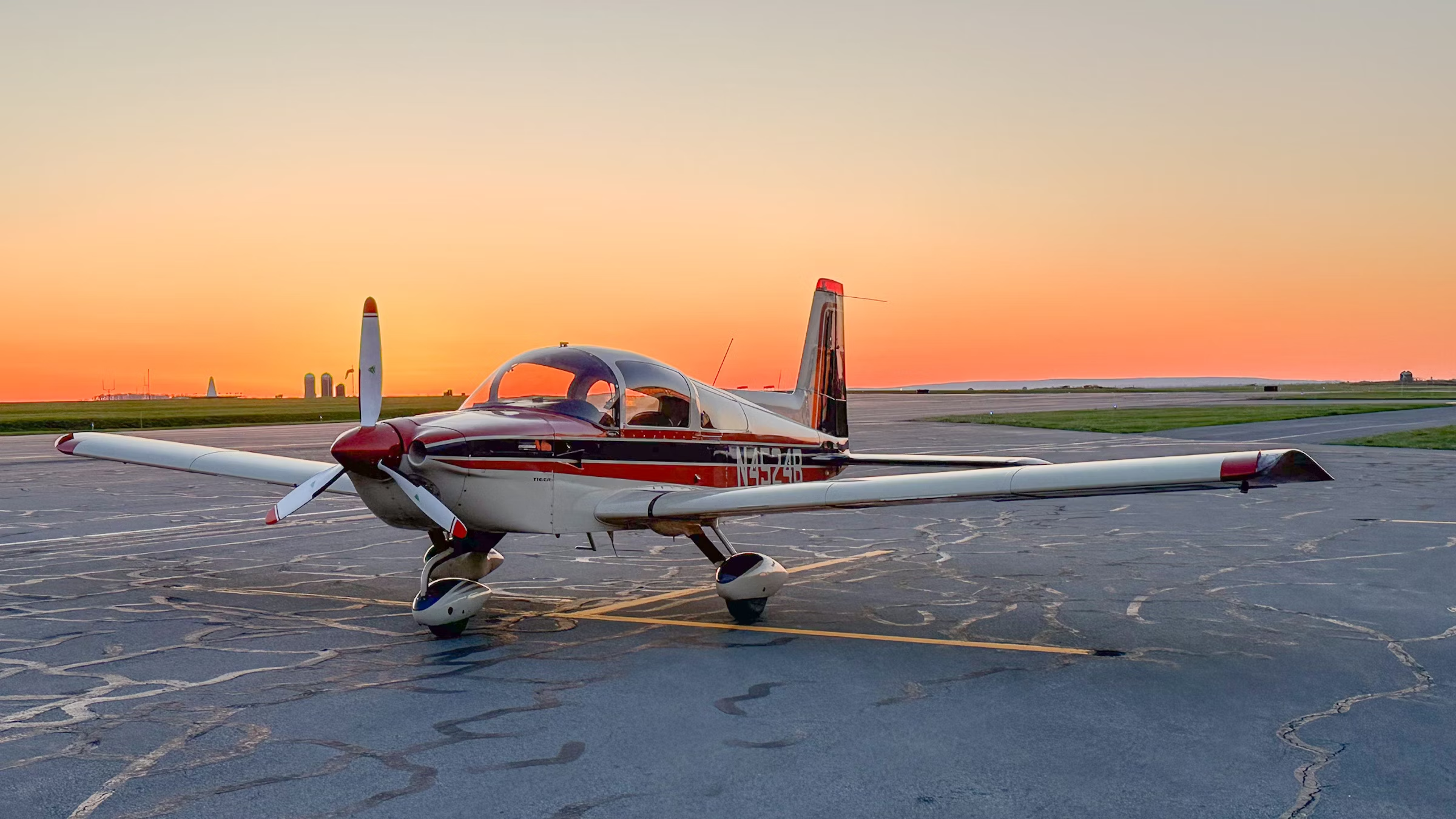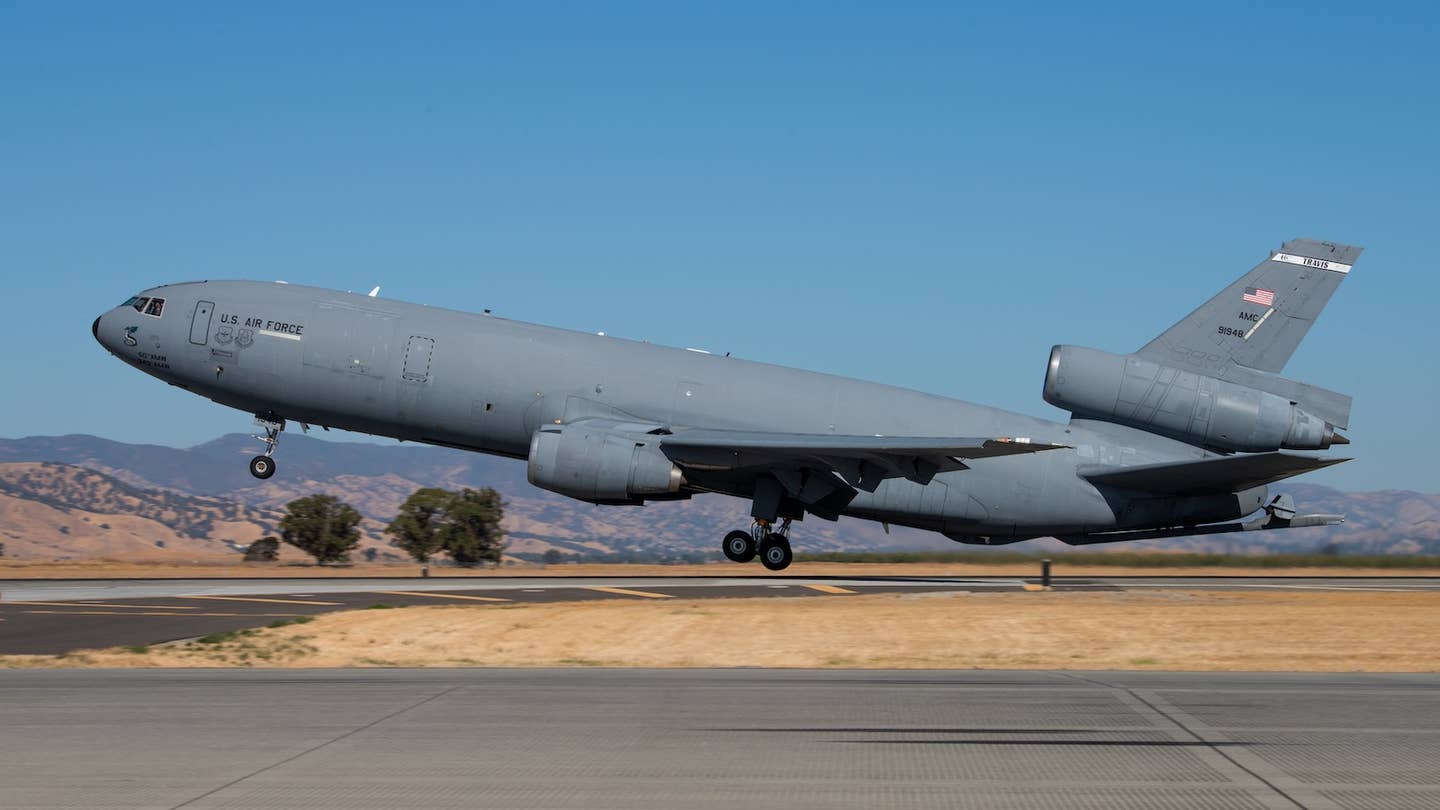Raising ATC Retirement Age Not an ‘Effective Solution’ to Shortages, Union Says
National Air Traffic Controllers Association (NATCA) disagrees with Transportation Secretary Sean Duffy’s plan to allow controllers to stay longer.

Control tower staffing levels are below the FAA’s target at Ronald Reagan Washington National Airport (KDCA), the site of a fatal midair collision in January. [Courtesy: Shutterstock/TJ Brown]
The union representing America’s air traffic controllers does not believe Transportation Secretary Sean Duffy’s proposal to alleviate widespread shortages is an “effective solution.”
The National Air Traffic Controllers Association (NATCA) told FLYING that Duffy—who last week suggested allowing controllers to stay on past the mandatory retirement age of 56 during an interview on Fox News—is missing the mark.
“The solution to the ATC staffing crisis is a long-term commitment to hiring and training and the retention of the experience of all the highly skilled, highly trained air traffic controllers,” the union said in a statement. “NATCA will continue to advocate for practical, effective solutions that ensure safety, protect the workforce, and restore stability to the system.”
The air traffic control system has come under increased scrutiny in the wake of last month’s fatal midair collision near Ronald Reagan Washington National Airport (KDCA)—the first major U.S. commercial aviation accident in more than a decade. The collision between a passenger jet and U.S. Army Black Hawk helicopter killed all 67 occupants of both aircraft.
According to a recent FAA report, as of September 2023, there were about 10,600 certified professional controllers (CPCs) working at U.S. airport terminals and en route facilities. That’s about 2,000 short of the FAA’s 2024 staffing standards target and more than 4,000 shy of the target set by the Collaborative Resource Workgroup (CRWG)—a joint entity comprising FAA and NATCA personnel. The union believes the CRWG is the more effective staffing model.
Counting developmental controllers who recently graduated from the FAA’s academy in Oklahoma City, as well as CPCs in training (CPC-ITs)—controllers learning the ropes of a new facility after working elsewhere—U.S. airports had 13,448 total ATC employees. The FAA and NATCA wanted 14,633 CPCs alone in 2024. But despite efforts to boost hiring, the agency netted only 36 new controllers in fiscal year 2024, The Air Current reported.
The FAA last week revealed there are 25 CPCs and three CPC-ITs staffing the control tower at KDCA, shy of its target of 28. At the time of the collision, one controller was reportedly handling the work of two personnel. The National Transportation Safety Board (NTSB) has yet to indicate whether that played a role in the accident.
Allowing controllers to continue working past the mandatory retirement age of 56, Duffy said, could “make the system safer” and “alleviate the pressure” on controllers. But it won’t be enough to move the needle.
“In the next 12 months, we anticipate 49 ATCs across 35 facilities will reach age 56,” NATCA said. “This is not enough to address the nationwide staffing shortage.”
President Donald Trump has vowed to tackle the chronic shortage. After some initial confusion, Duffy last week clarified that controllers are exempt from the federal hiring freeze and buyout offer announced after Trump took office.
NATCA has clashed with some of the Trump administration’s other proposals, such as allowing a group of inexperienced engineers associated with Elon Musk’s Department of Government Efficiency (DOGE) to “plug in” and make “rapid safety upgrades” to the nation’s ATC system, in Duffy and Musk’s words.
Nick Daniels, president of NATCA, has publicly defended the union's members after Trump suggested, without evidence, that diversity, equity, and inclusion (DEI) hiring practices were producing unqualified controllers.
“The standards to achieve certification are not based on race or gender,” Daniels said in a statement. “The proud men and women that comprise the nation’s aviation safety professionals bear the immense responsibility of ensuring the safety and efficiency of the national airspace system while working short-staffed, often six days a week, and in facilities long overdue for modernization.”
NATCA told FLYING that the Trump administration should focus on ATC hiring and training rather than retaining aging controllers. Retired controller Stephen Abraham—better known as “Kennedy Steve” in ATC circles, where he’s a bit of a celebrity—told Vulture the current retirement age is “absolutely appropriate.”
“I never thought that until I was probably 52 or 53, because the job was always easy,” Abraham said. “And then the last three years of my career, I’m like, ‘Wow, I got to think a lot harder to do this.’”
Like this story? We think you'll also like the Future of FLYING newsletter sent every Thursday afternoon. Sign up now.

Sign-up for newsletters & special offers!
Get the latest FLYING stories & special offers delivered directly to your inbox






